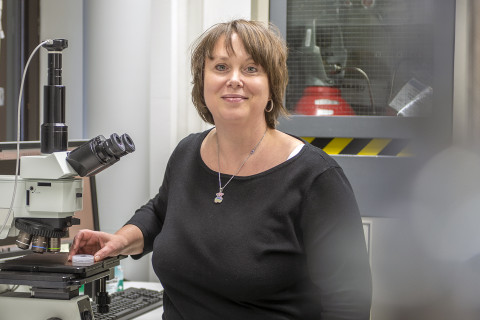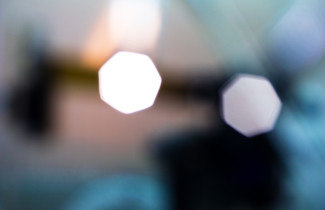A brave combination of disciplines can lead to the emergence of new ones, such as astrobiology. Highly sensitive sensors that rely on terahertz radiation can be used to look for signs of life in the universe or to learn about the function of human neurons in, e.g., Parkinson’s and Alzheimer’s diseases.
Senior Researcher Polina Kuzhir launched TURANDOT, a project funded by a Marie Curie Individual Fellowship, at the Department of Physics and Mathematics, Institute of Photonics, last autumn. Kuzhir’s academic career is international and impressive, and she has collaborated with the University of Eastern Finland already before.
“Over the past ten years, I have collaborated closely with Professor Yuri Svirko. Our previous Marie Curie project was completed at the end of September,” says Kuzhir, who is originally from Belarus.
“My background is in theoretical physics. I have one foot in particle physics and the other in materials physics, so to speak. The best thing about being a researcher is that one can move on to a new field of research at any age.”
“In the TURANDOT project, we bring together particle physics, quantum physics, nanotechnology, photonics and materials science, among other things.”
“Our goal is to build a new type of device for measuring terahertz radiation. This device will be based on the unique properties of graphene and transition metal dichalcogenides (DTMs). The device is intended for applications in space, which means that it has to tolerate space radiation,” Kuzhir explains.
“Being ultra-sensitive, the device can also be used in astrobiology. Astrobiologists look for organic molecules in space, i.e. they are looking for signs of life in the universe.”
According to theoretical calculations, a two-dimensional material, such molybdenum disulphate, should tolerate space radiation. In practice, prototypes will be tested in the Belgian Space Agency under conditions that mimic space. Kuzhir has former colleagues working there.
“Future prototypes can be very small, no more than a cubic centimetre,” Kuzhir says.
“Terahertz and microwave radiation can also be used to study living cells, such as neurons. With the help of radiation, it is possible to control the growth and interaction of cells. We are currently exploring the possibility to launch this type of research at the university together with colleagues from materials science, photonics, neurobiology and biomedicine. Perhaps we’ll be able to find new solutions to combat Parkinson’s disease, Alzheimer’s disease or epilepsy.”
“If all goes well and we make promising discoveries in our project, we can apply for a new ERC project at UEF. I’d like to keep on working here because I like the surroundings, people and atmosphere at the university.”
“There are also five Master’s degree students in my research group whom I want to help in their academic careers. Publishing in scientific journals helps to develop one’s skills,” she says.
“People here are straightforward, yet very kind. It’s easy to do research here once you know the rules – and of course we need skilled staff to operate our expensive pieces of research equipment. My future plan is to study the Finnish language and culture: after all, they play a key role in feeling at home here,” she says.
* * *
- Polina Kuzhir’s Marie Curie Individual Fellowship is the fifth Marie Curie funding at UEF under the Horizon2020 programme for 2014–2020. Marie Curie funding is highly competitive: with nearly 10,0000 proposals submitted, the success rate was only about 14% in this round of applications.
- The majority of the funding is granted to the younger generation of researchers, constituting a good step towards becoming an independent researcher. The international experience gained with the help of this funding can help a researcher secure funding from the Academy of Finland later on, and also serves as a good stepping-stone for applying for funding from the EU’s European Research Council, ERC, which is also extremely competitive.
- Two of the Marie Curie fellowships awarded to UEF researchers are Global Fellowships, and three are European Fellowships, which is also the case with Kuzhir's fellowship.
- Research Funding Specialist Hannele Juvaste
In the photo: Polina Kuzhir.


